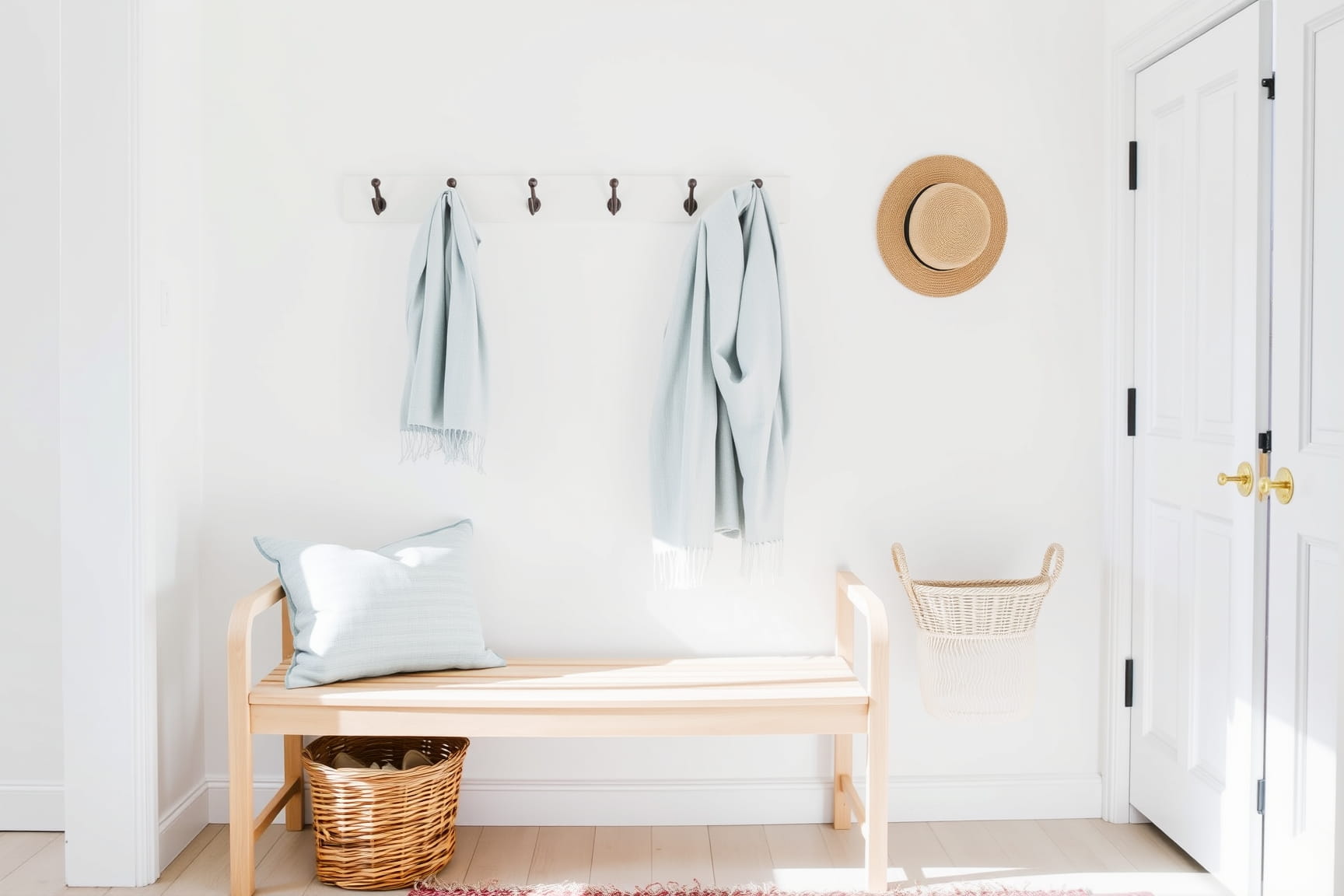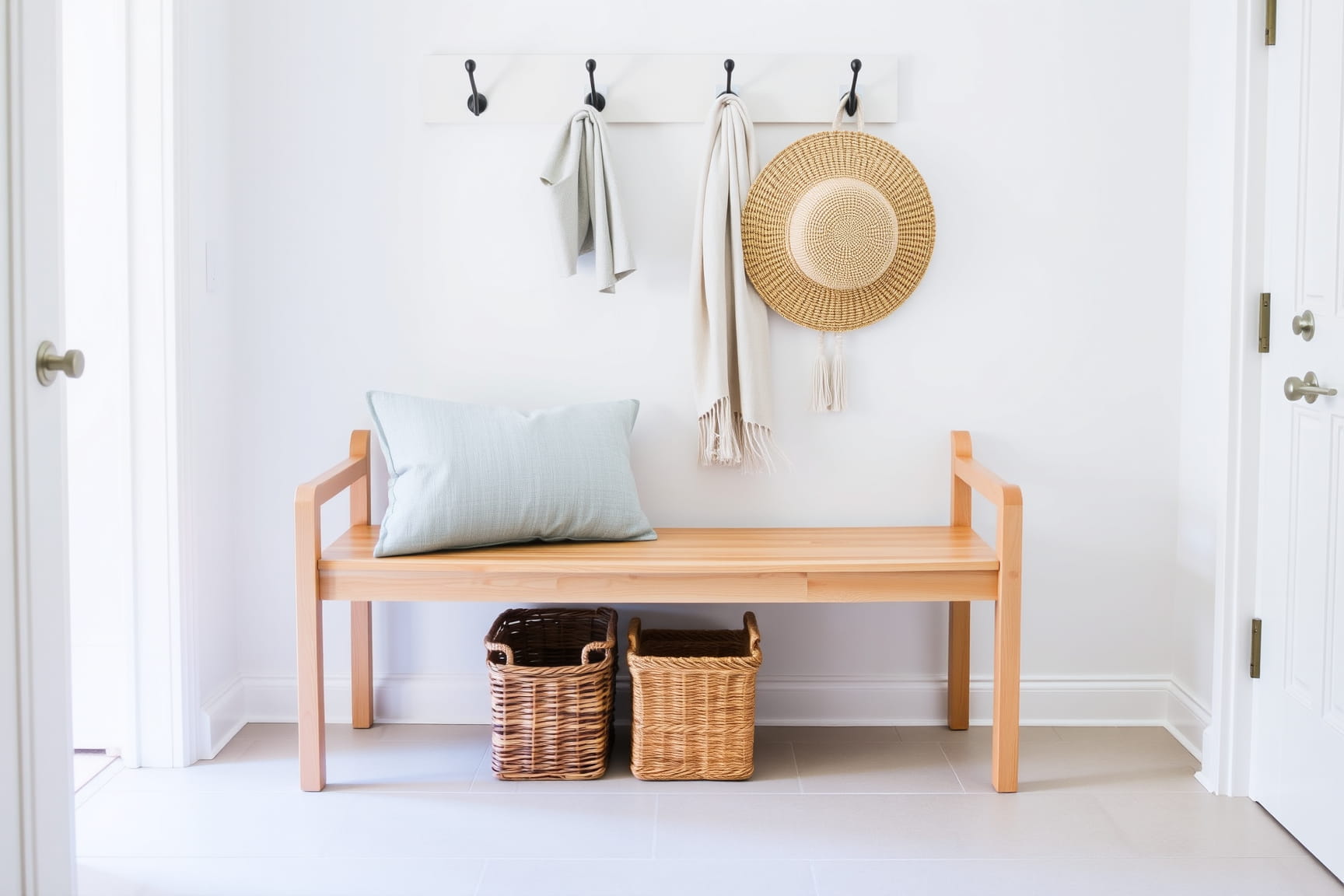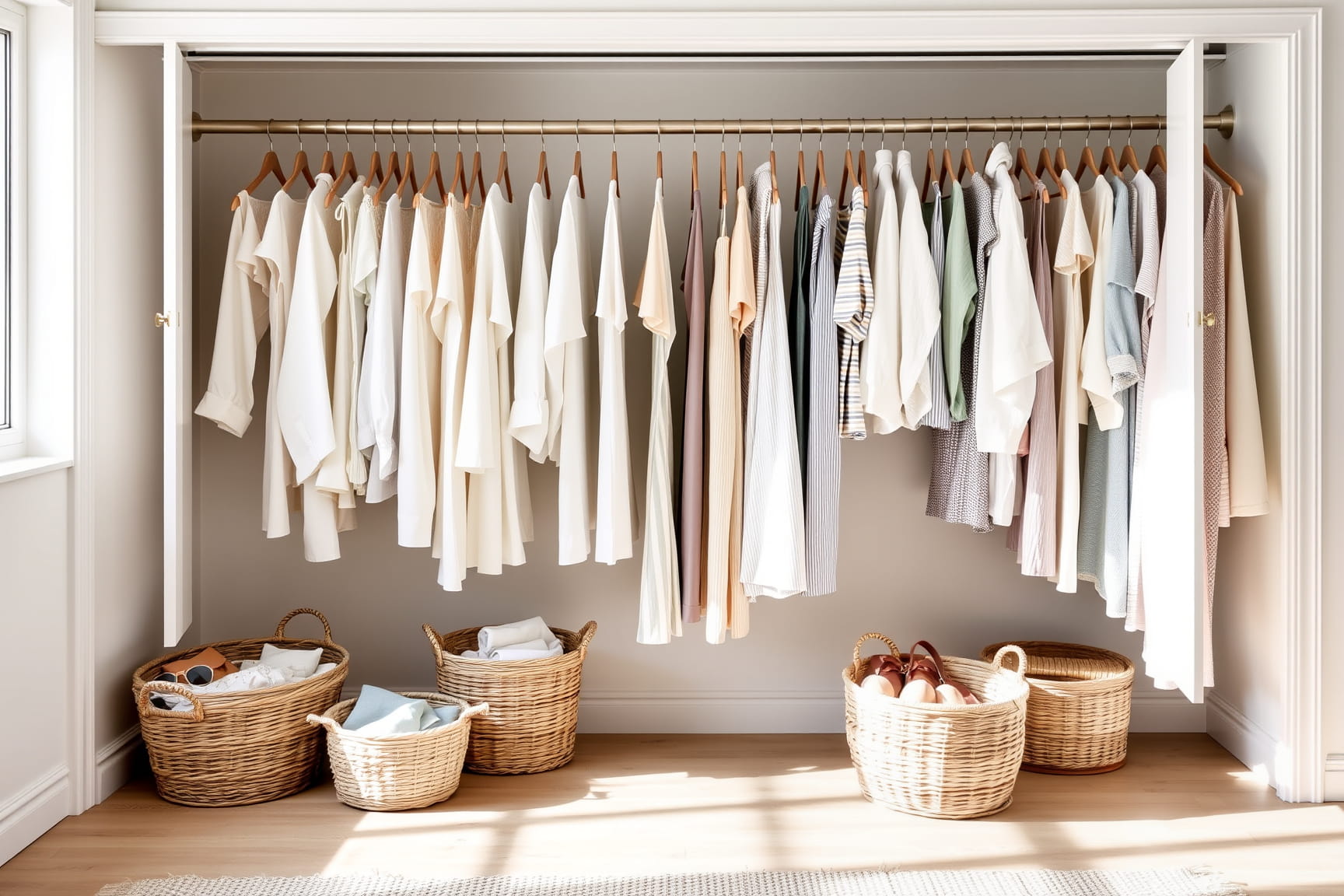Decluttering in Small Steps: The 10-Minute Daily Routine That Transforms Your Home

We’ve all seen the makeover shows, right? Someone’s house goes from chaos to minimalist magazine spread in forty-eight minutes (commercial breaks included). But real life? Real life has laundry piles that migrate from the couch to the bed and back again. The myth of the Big Declutter makes us believe we need an entire weekend, a truckload of bins, and maybe a personal pep talk from Marie Kondo herself.
Here’s the truth: decluttering doesn’t have to be dramatic. It can be slow, almost sneaky. Ten minutes here, ten minutes there. Like how you nibble away at leftovers straight from the fridge instead of committing to a full meal. (Yes, cold pizza counts.) And honestly, that slow, bite-sized approach works better for most of us, because life isn’t a TV montage—it’s school runs, Zoom calls, and, oh, the dog just knocked over the recycling again.
So let’s ditch the idea that you need a free weekend—or a new personality—to get started. Small steps work. They work better, in fact.
Why Ten Minutes Feels Doable (Even When You’re Tired)
Ten minutes is the sweet spot. Long enough to make progress, short enough that you can’t really argue with yourself about it. You ever notice how saying, “I’ll clean the whole garage today” feels impossible, but “I’ll sort this one shelf for ten minutes” somehow slips past your brain’s defenses? Yeah. That’s the trick.
Also, ten minutes fits into weird little life pockets. Waiting for pasta water to boil? That’s a drawer’s worth of decluttering right there. Phone about to die but you don’t want to get too invested in anything? Perfect timing for sorting through the mug collection.
And here’s the bonus: often, ten minutes turns into fifteen. Or thirty. It’s like when you promise yourself you’ll just watch one episode and suddenly Netflix is asking if you’re still alive. Momentum sneaks up on you. But even if it doesn’t—hey, ten minutes still counts.
The Entry Point: Where to Begin Without Overthinking It
Here’s the number one roadblock: “But where do I start?” And honestly, that question has paralyzed more clutter-busting attempts than any overflowing junk drawer ever could. My advice? Start with the thing that’s bugging you the most right now. Not the garage that’s haunted you for five years, but the kitchen counter you trip over every single morning.
Or—pro tip—start with something ridiculously small. Like the pen cup on your desk. Because if you’re anything like me, you have at least three pens that don’t work but keep getting invited to the party. Tossing those out gives you a weirdly satisfying win. And then suddenly, you’re like, “Okay, what else can I clear?”
Think of it like stretching before a workout. You wouldn’t begin by deadlifting a car. You’d loosen up with a little toe-touch action. Same rules apply here.
The Sneaky Psychology of Letting Go
Let’s talk about the brain for a second. Decluttering isn’t just about stuff—it’s about the emotions tangled up in that stuff. The guilt gift (you never liked it, but someone gave it to you). The “just in case” item (hello, seventeen extra tote bags). The memory thing (that broken snow globe from a vacation fifteen years ago).
Ten minutes a day helps because it lowers the stakes. You’re not saying goodbye to everything all at once—you’re just deciding if that one chipped mug deserves space in your kitchen. And when you do it in small chunks, your brain doesn’t freak out as much. It’s like gently easing yourself into cold water instead of cannonballing.
Sometimes you’ll still hesitate. That’s fine. Put the item in a “maybe” box and revisit later. The box is like a clutter waiting room. Some things you’ll rescue, others you’ll completely forget about (which tells you all you need to know).

The Kitchen Counter Rule
If you want a game-changer, here it is: the kitchen counter sets the tone for your entire home. I swear. You walk in and see piles of unopened mail, random receipts, and a lunchbox that’s been there since Tuesday—and instantly, the whole place feels messy. But when that counter is clear? Suddenly the house feels calmer, cleaner, like you might actually have your life together.
So here’s the rule: spend ten minutes each day on the kitchen counter. Toss the junk mail, recycle the flyers, deal with the orphaned spoon (why is there always a spoon?). It doesn’t have to be perfect; it just has to be less of a drop zone.
And fair warning: once you clear it, you’ll get weirdly protective of it. You’ll side-eye anyone who dares leave a pile of stuff there. Which is great—because the clearer it stays, the more space you’ll have for, you know, actual cooking. Or at least a place to drop the pizza box without feeling guilty.
The Closet Quick Win
Closets are tricky beasts. You open the door, and suddenly you’re buried under a cascade of scarves you forgot you owned. But here’s the hack: don’t aim to overhaul the whole closet in one go. Ten minutes is enough to pull out five things you never wear (yes, that itchy sweater from 2012 counts) and bag them for donation.
It feels small—but when you stack these daily wins, the closet starts breathing again. And no, you don’t need a full IKEA Pax system to get organized (though walking through IKEA can make you believe otherwise). Sometimes it’s just about fewer clothes and a little space between hangers.
Bonus? Every time you donate something, you’re giving someone else a “new” favorite shirt. Which makes parting with it feel less like a loss and more like passing on a gift.
The Bathroom Blitz
Here’s a weird truth: bathrooms collect clutter like nobody’s business. Half-used lotions, expired sunscreen, hotel shampoos you swore you’d use. (Spoiler: you won’t.) Ten minutes in the bathroom can be surprisingly liberating. Open a drawer, toss the expired stuff, and suddenly the morning routine feels calmer.
And let’s be honest—starting the day without digging through a chaos drawer is the kind of peace we all need. Plus, the visual impact of clear counter space around the sink? Chef’s kiss. It’s like your bathroom went on a spa retreat.
Side tangent: why do we keep travel-sized toothpaste as if it’s some sort of treasure? You are allowed to let it go.
The Paper Pile Problem
Paper clutter is the sneakiest villain of all. Bills, flyers, kid artwork, receipts you meant to file—it multiplies when you’re not looking. Tackling an entire paper pile feels soul-crushing, but ten minutes a day? That’s manageable.
Set a timer, flip through a stack, and make fast decisions: recycle, shred, or keep. (And yes, kid art can go into a “highlight reel” folder—no one needs every scribble from preschool.)
The key is momentum. Each sheet you toss is a little victory. And soon, the paper pile stops being a mountain and becomes… well, just paper. Manageable paper.
The Emotional Box Strategy
We all have one. A box—or three—filled with “stuff I can’t deal with right now.” Old love letters, trinkets from vacations, that random charm bracelet from middle school. These aren’t clutter in the practical sense; they’re clutter in the emotional sense. And that’s heavier.
Here’s the trick: don’t tackle the whole box. Ten minutes is plenty. Pick one or two items, let yourself reminisce, and then ask the tough question: do I need to keep this, or has the memory already done its job?
Sometimes you’ll keep it. Sometimes you’ll let it go. Both are wins. And honestly, revisiting these boxes in short bursts makes the process feel less like ripping off a Band-Aid and more like a gentle walk down memory lane.
The Nightstand Reset
If the kitchen counter sets the tone for your home, your nightstand sets the tone for your rest. A cluttered nightstand (three books you’re “currently reading,” an old glass of water, tangled phone chargers) whispers chaos right before bed.
Ten minutes is all it takes: clear the surface, keep only what belongs, and maybe add something intentional—a lamp you actually love, a single book, or, wild idea, nothing at all.
And the payoff? Falling asleep without knocking over a precarious pile of stuff feels like luxury. Plus, you wake up to calm instead of clutter. That’s a reset button you press without even touching it.
The Entryway Shuffle
First impressions matter—even if it’s just you walking into your own space. The entryway is like the handshake of your home. When it’s piled with shoes, bags, and rogue umbrellas, it screams chaos. But give it ten minutes? Game-changer.
Line up the shoes, hang the coats, recycle the stack of delivery menus (you order from the same two places anyway). It doesn’t need to look like a Pinterest board; it just needs to say, “Welcome home” instead of “Trip hazard ahead.”
And honestly, clearing this spot gives you an outsized sense of accomplishment. It’s the first thing you see, the first thing you feel. Small shift, big vibe.
The Digital Declutter (Yes, It Counts)
Clutter isn’t just physical. Your phone, your laptop—they’re bursting with their own brand of chaos. Screenshots you don’t remember taking, tabs you’ve ignored for months, emails from 2014. Ten minutes of digital declutter can feel as satisfying as clearing a junk drawer.
Delete old apps. Toss out blurry photos. Unsubscribe from the newsletter you never read (except mine—obviously keep that one). The beauty? This is a declutter session you can do while waiting in line at the coffee shop.
Digital clutter steals energy, too. Freeing up space makes your devices lighter—and, let’s be real, makes your brain lighter, too.

The “One Drawer at a Time” Rule
Junk drawers are universal. (Yes, plural—don’t lie.) The key is not to fear them but to use them as practice zones. Ten minutes per drawer, max. You’ll find mystery keys, dead batteries, maybe even an old iPod. It’s like an archaeological dig through your own habits.
The rule is simple: one drawer, one session. Don’t peek into the others, don’t let curiosity turn it into an overwhelming project. Small focus zones keep you from spiraling.
And once you tame a drawer? Every time you open it, you’ll feel a tiny hit of satisfaction. Like, “Wow, look at me, I’ve got it together.” Even if the rest of the house is… well, not there yet.
The “Donation Bag on Standby” Trick
Here’s a practical hack: keep a donation bag somewhere visible—closet corner, laundry room, trunk of your car. Whenever you bump into something you no longer want, drop it in.
This works because decluttering isn’t always planned. Sometimes you just grab a sweater and think, “Nope.” Having a bag ready means the item leaves your space in the moment, not someday when you remember to schedule a Goodwill run.
And over time, the bag fills. You don’t even notice the trickle—but then one day, it’s ready to go, and your stuff is already half gone without any “big purge” effort.
Building the Habit Without Burning Out
Here’s the real magic: it’s not about the ten minutes, it’s about what happens when those ten minutes become part of your routine. Decluttering stops being an event and starts being maintenance—like brushing your teeth or making coffee.
And no, you don’t have to do it every single day. Consistency beats perfection. Maybe it’s three times a week, maybe it’s daily. The point is, you start to trust yourself: you know the piles won’t grow forever, because you’ve built a system to chip away at them.
Burnout happens when we think decluttering is a one-time battle. But in small, sustainable doses, it becomes background noise—quiet progress that adds up over time. And honestly? That’s the kind of win that sticks.
Ready to Take Your Next Step?
You’ve seen how 10-minute daily decluttering reshapes not just your home but your mindset. Now imagine what’s possible when you build on this momentum. Each small step opens space for clarity, calm, and joy. If you’re craving deeper guidance—whether it’s tackling sentimental clutter, learning sustainable systems, or simply finding accountability—you don’t have to do it alone. Explore more articles, join a challenge, or subscribe for practical tips tailored to real life. Your home can become a reflection of who you are now, not just who you were.
“Every clear space is an invitation to live fully.”
